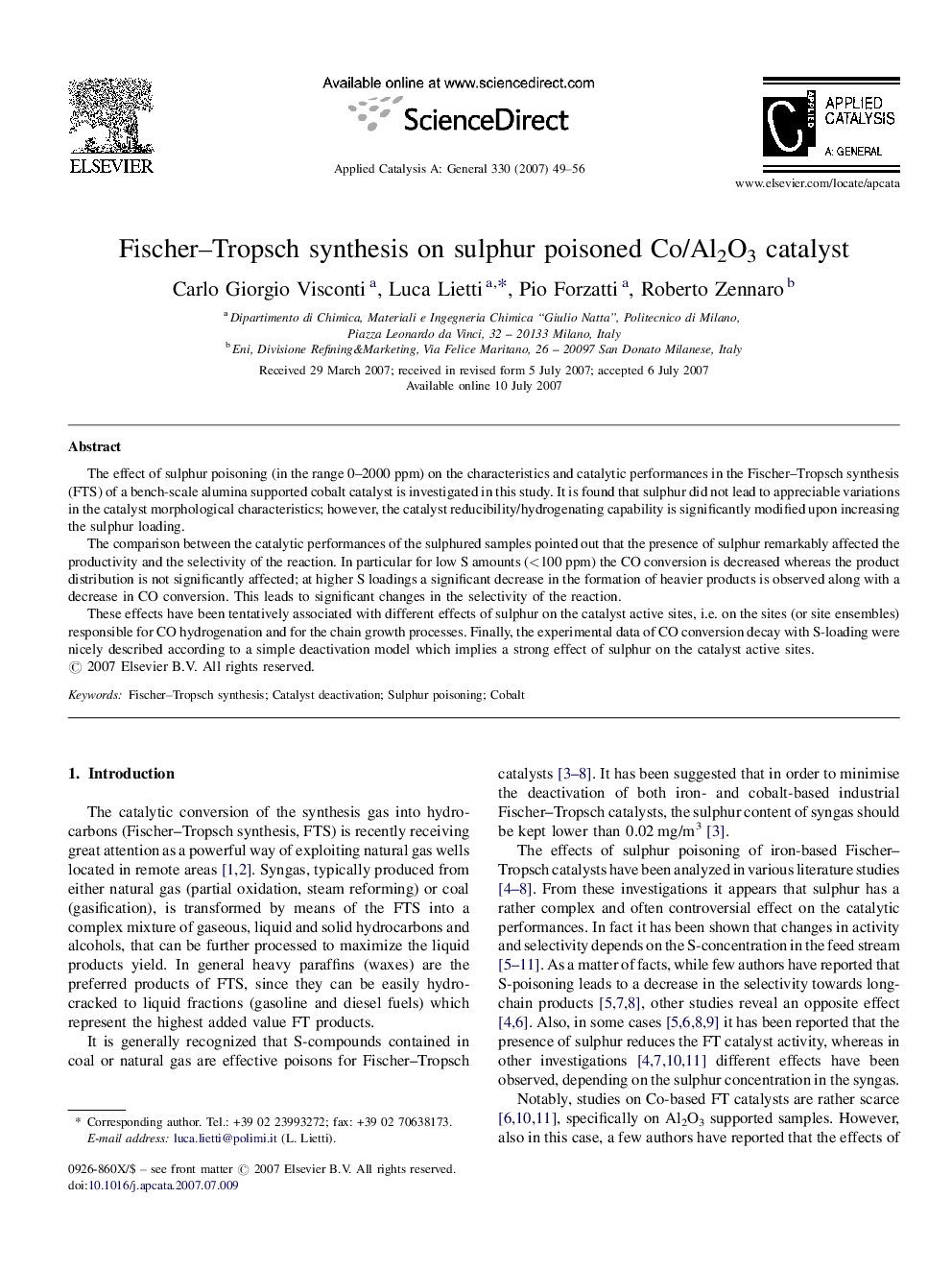| کد مقاله | کد نشریه | سال انتشار | مقاله انگلیسی | نسخه تمام متن |
|---|---|---|---|---|
| 43446 | 45970 | 2007 | 8 صفحه PDF | دانلود رایگان |

The effect of sulphur poisoning (in the range 0–2000 ppm) on the characteristics and catalytic performances in the Fischer–Tropsch synthesis (FTS) of a bench-scale alumina supported cobalt catalyst is investigated in this study. It is found that sulphur did not lead to appreciable variations in the catalyst morphological characteristics; however, the catalyst reducibility/hydrogenating capability is significantly modified upon increasing the sulphur loading.The comparison between the catalytic performances of the sulphured samples pointed out that the presence of sulphur remarkably affected the productivity and the selectivity of the reaction. In particular for low S amounts (<100 ppm) the CO conversion is decreased whereas the product distribution is not significantly affected; at higher S loadings a significant decrease in the formation of heavier products is observed along with a decrease in CO conversion. This leads to significant changes in the selectivity of the reaction.These effects have been tentatively associated with different effects of sulphur on the catalyst active sites, i.e. on the sites (or site ensembles) responsible for CO hydrogenation and for the chain growth processes. Finally, the experimental data of CO conversion decay with S-loading were nicely described according to a simple deactivation model which implies a strong effect of sulphur on the catalyst active sites.
Sulphur ex-situ poisoning of a state-of-the-art cobalt based Fischer–Tropsch catalyst has been studied in the range 0–2000 ppm. The sulphur presence induces a decrease of the catalyst reducibility, hydrogenating ability, FT productivity and high molecular weight product selectivity. Four deactivation models, considering different dependences of the catalyst activity on the sulphur content, were used to fit experimental data.Figure optionsDownload as PowerPoint slide
Journal: Applied Catalysis A: General - Volume 330, 10 October 2007, Pages 49–56